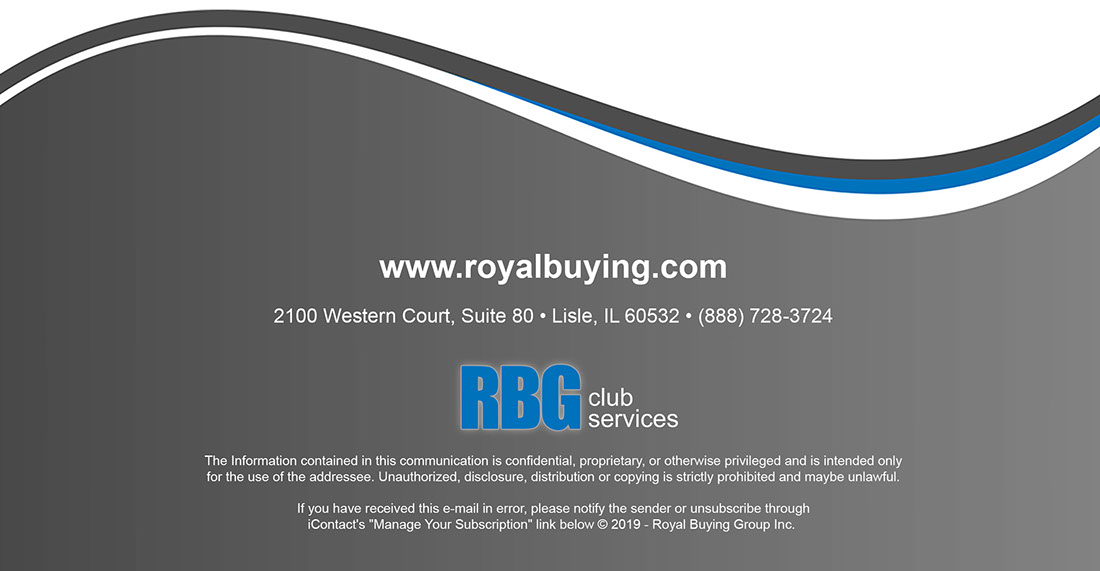
How Healthy Snacks Help Boost the Bottom Line
December 2019
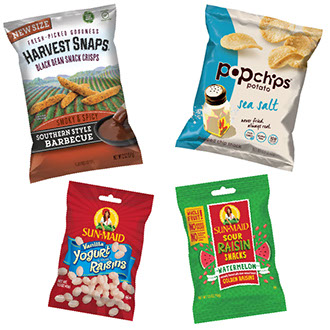 Convenience and quality remain top of mind for consumers
Convenience and quality remain top of mind for consumers
Healthy snacks are good for consumers, but they’re pretty good for retailers, too. More and more people are reaching for snacks—whether that means they are making a pit stop on a road trip or popping into a convenience store during a lunch break—and more and more, those snacks are healthy choices. Consumers are not only focused on convenience when it comes to their healthy options; they’re also seeking quality.
Snacking by the numbers
There are millions of noshers out there—80% of consumers say they snack at least once a day, and some even replace meals with snacks. A recent study from Brandware showed that 75% of c-store shoppers want more variety of healthy snacks and 64% of c-store shoppers would shop in-store more often if healthy snacks were available.
When examining the numbers, it’s apparent that the market is ripe for snacks that deliver—and not just on a craving, but a healthy benefit too.
Cash in on cravings
From crispy peapods and Popchips to deliciously sweet dried fruit blends, snackers look for an array of different foods. When it comes to what kind of snacks consumers gravitate toward, the Brandware study showed that the healthy attributes most important to consumers included all natural, non-GMO and high protein. Retailers looking to increase sales of healthy snacks should stock items that fit those criteria.
While traditional snacks will always have a place on the shelves (and in customers’ baskets), healthy snacks have the potential to be a major growth driver for c-stores. Retailers that give consumers healthier grab-and-go options will likely come out on top as the quest for a healthier lifestyle continues to trend.
Effective, Medicated Lip Balm Customers Will Love!
October 2019
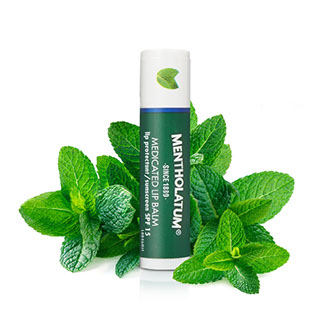 Provide comfort and assurance to your customers! This effective, medicated lip balm moisturizes dry, chapped lips, and soothes, heals, and protects them against sunburn with SPF 15.
Provide comfort and assurance to your customers! This effective, medicated lip balm moisturizes dry, chapped lips, and soothes, heals, and protects them against sunburn with SPF 15.
With the winter months just around the corner, customers are always looking for ways to soothe dry, cracked lips to avoid discomfort. Wind-burned, chapped, dry lips are one of the leading causes of discomfort in the colder months. The medicated, cooling, soothing protection is naturally made in the USA.
But this moisturizing product isn’t only limited to the winter months! Mentholatum’s Lip Balm helps protects lips against sunburn during the hotter, dry months. Help customers avoid sunburnt lips and discomfort after the snow has melted away.
Mentholatum’s Medicated Lip Balm is a perfect year-round product. Stock up on yours today!
How Healthy Snacks Help Boost the Bottom Line
April 2019
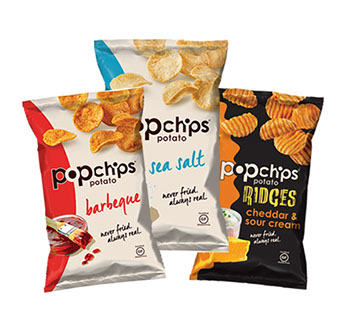 Convenience and quality remain top of mind for consumers
Convenience and quality remain top of mind for consumers
Healthy snacks are good for consumers, but they’re pretty good for retailers, too. More and more people are reaching for snacks—whether that means they are making a pit stop on a road trip or popping into a convenience store during a lunch break—and more and more, those snacks are healthy choices. Consumers are not only focused on convenience when it comes to their healthy options; they’re also seeking quality.
Snacking by the numbers
There are millions of noshers out there—80% of consumers say they snack at least once a day, and some even replace meals with snacks. A recent study from Brandware showed that 75% of c-store shoppers want more variety of healthy snacks and 64% of c-store shoppers would shop in-store more often if healthy snacks were available.
When examining the numbers, it’s apparent that the market is ripe for snacks that deliver—and not just on a craving, but a healthy benefit too.
Cash in on cravings
From crispy peapods and Popchips to deliciously sweet dried fruit blends, snackers look for an array of different foods. When it comes to what kind of snacks consumers gravitate toward, the Brandware study showed that the healthy attributes most important to consumers included all natural, non-GMO and high protein. Retailers looking to increase sales of healthy snacks should stock items that fit those criteria.
While traditional snacks will always have a place on the shelves (and in customers’ baskets), healthy snacks have the potential to be a major growth driver for c-stores. Retailers that give consumers healthier grab-and-go options will likely come out on top as the quest for a healthier lifestyle continues to trend.
How to Boost HBC Sales During Cold and Flu Season
January 2019
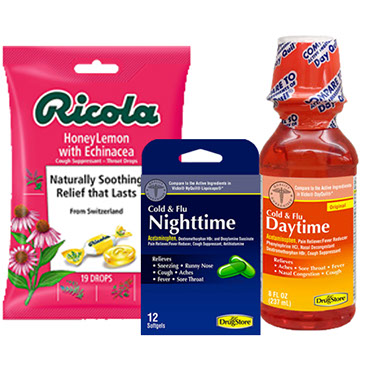 Increasing incremental category sales
Increasing incremental category sales
While no one wants to get sick during the winter, it is inevitable for many consumers. For convenience store retailers, cold and flu medicine are great to keep in stock, but beyond the obvious products such as decongestants and cough medicine, several other products can help boost health and beauty category (HBC) sales incrementally.
Here are a few strategies to employ, as well as a few products to consider stocking, to help thrive through these tough few months.
Product footprint and placement
C-stores are, of course, all about convenience. When consumers come in to purchase cold medicine, for example, what better pairing than cough drops or lip balm to help ease their other cold symptoms?
Retailers can count on shoppers to purchase medicine and other cold- and flu-relief products, but to boost sales in HBC, making sure peripheral products are well-placed can help. For instance, placing cough drops next to cold remedies can trigger a lightbulb moment in shoppers, or placing lip balm by the cash register could encourage impulse sales.
Showcasing products both in areas where they make a clear connection to related items as well as at the checkout counter--where visible signage and appropriate messaging can encourage additional purchases—can be the key to increasing incremental sales in the HBC category during winter.
Product selection
In addition to where products are located and how visible they are, incremental sales can be encouraged by offering appealing products. During winter, seasonal, special edition-type products can perform well, even with everyday products such as lip balm.
Lil’ Drug, a leading supplier of HBC products to c-stores, offered to retailers a countertop display of a Carmex Original Tube BOGO pack that included a free Carmex flavor stick. One of the largest c-store chains placed the countertop displays in regions around the country during winter months, and the data pointed to an increase in sales. According to retail sales data from September 2017 to February 2018, Lip Care category dollar sales increased by as much as 22% versus last year in regions that merchandised the Carmex BOGO display in their stores.
With numbers like that, it is worth it for retailers to consider placing cold and flu season products in prominent visibility. Beyond medications, products like cough drops, vitamin C supplements or hand lotion can all be ideal for increasing incremental sales during slower winter months.
3 Ways to Pump New Life into Your HBC Business
Proven merchandising strategies that increase sales and profit
September 2018
 According to a Lil’ Drug study on the reasons shoppers purchase HBC at convenience stores, the convenience of being close to a c-store and being able to get in and out quickly is one of the most cited reason as to why consumers purchase an item at a convenience store rather than another retailer. So if c-stores can deliver convenience while optimizing other marketing factors, such as product mix and merchandising, they can expect results to follow.
According to a Lil’ Drug study on the reasons shoppers purchase HBC at convenience stores, the convenience of being close to a c-store and being able to get in and out quickly is one of the most cited reason as to why consumers purchase an item at a convenience store rather than another retailer. So if c-stores can deliver convenience while optimizing other marketing factors, such as product mix and merchandising, they can expect results to follow.
Successful retailers often take a fresh look at the Health and Beauty Care (HBC) assortment and are willing to try new approaches to c-store merchandising strategy. Lil’ Drug Store Products (LDSP), the #1 HBC supplier to the convenience channel, has worked with retailers of all sizes to develop effective category management strategies. LDSP shared three different strategies that delivered the same end-result—increased sales and profits, while maintaining efficiencies that c-store shoppers demand.
Strategy 1: Make HBC Easy to Find
In the first case study, LDSP recommended upgrading from a relatively small assortment of HBC products at the front counter to a permanent inline shelf set. This strategy gave consumers a broader selection of HBC solutions, enabled easier shopping access and increased awareness.
For shoppers coming in for a specific health and beauty item, products were quick and easy to find. The increased visibility and improved access generated incremental sales, as retailers who were not previously thinking to buy HBC products at a c-store were now more aware of the availability of pain relievers, cold and allergy remedies.
Retailers who have employed this strategy not only increased sales, they also exceeded their budgeted gross profit. In one case, a retailer increased profit by 4.5 times in the first year alone.
Strategy 2: Offer Value
Ask yourself what you want your HBC shelf design to accomplish and then make it happen by using category management best practices. What are the benefits? Lil’ Drug’s experience shows that a well thought out retail planogram strategy can result in increased visual appeal, more effective communication to customers, tightened inventories, improved product positioning within sub-categories and greater productivity within the space.
As an example, LDSP worked with a Top 50 c-store chain to create an HBC shelf schematic that moved larger packs of value brand products from the bottom shelf to eye level on the top shelf. This alignment encouraged some shoppers to trade up to the higher dollar value packs, which contributed to more than 10% category dollar growth for the retailer compared to the channel average 2% category growth versus the prior year.
Strategy 3: Optimize Assortment
In some channels, giving customers a plethora of product forms, pack sizes and formulations to choose from might be good for business. However, space and time is more limited in c-stores so multiple consumer options may not be feasible. Offering too many choices can sometimes be confusing to consumers and makes the HBC category more difficult to shop. Therefore, it is important for the c-store retailer to focus the assortment on the most productive SKUs.
In this third case study, LDSP recommended that a regional c-store chain eliminate middle tier price points. The retailer concentrated on meeting the needs of the price conscious and value oriented shoppers. The absence of a middle price point did not deter shoppers from trading up to higher dollar ring, multi-dose options. In fact, this retailer gained more than 20% dollar growth after eliminating the middle price point SKU while unit sales remained unchanged compared to the prior year.
C-store retailers have limited space, so it can sometimes be a challenge to increase sales and profits. Fortunately, several tried and true merchandising strategies simply require a different perspective to generate growth. Consider trying one of the proven techniques described above to increase HBC sales and profit at your stores.
Healthy Snacks Attract New Sales
June 2018
 Convenience-store operators plan their stores so that when customers come in looking for a snack, they’ll have no trouble finding an array of chips, candy, sodas and other tasty treats. But when it comes to appealing to consumers who want a healthier snack, stocking shelves with better-for-you options can be a great way to increase sales.
Convenience-store operators plan their stores so that when customers come in looking for a snack, they’ll have no trouble finding an array of chips, candy, sodas and other tasty treats. But when it comes to appealing to consumers who want a healthier snack, stocking shelves with better-for-you options can be a great way to increase sales.
More people are looking for healthy snacks
A July 2015 study from Brandware showed that 72% of consumers prefer to buy healthier snacks. Nowadays, shoppers have more options to choose from, including freshly prepared hummus and veggie cups, fruit cups and grab-and-go yogurt. Some consumers still think that c-stores don’t offer enough healthy snacks, though. To change the mindset that c-store don’t have enough options, retailers need to make these snacks highly visible in their stores—that can include placing them on endcaps or displays, where shoppers are more likely to notice them.
In the realm of shelf-stable options that are convenient and easy to eat, snacks such as Popchips have been gaining traction. Touted as having all the flavor but half the fat of regular fried potato chips, Popchips are a nonfried chip that offers a familiar taste in a better-for-you package, which is perfect for snackers looking for healthy options.
When they reach for a snack at a c-store, consumers who want something healthier often choose fresh fruit, wellness/protein or granola bars, trail mix or jerky. Alongside these snacks, lower-calorie, lower-fat and more natural versions of snacks that consumers already love, such as chips and popcorn, are on the rise.
What does ‘healthy’ mean?
The Brandware study showed that the healthy attributes most important to consumers included all natural, non-GMO and high protein. Retailers looking to increase sales of healthy snacks should stock items that fit those criteria.
Retailers should also stock shelves with snacks that offer benefits such as all-natural ingredients, no trans-fats, no artificial sweeteners or flavors and fewer calories than traditional snacks, as well as options that are non-GMO and high protein, in order to boost sales of healthy snacks.
Appealing to more consumers, boosting sales
Retailers know they have what consumers want in the realm of indulgent snacks such as baked goods or chips, but for customers who want grab-and-go options that are convenient and delicious but not too indulgent, it’s important to stock alternatives. In the Brandware study, 75% of c-store shoppers indicated the wanted more variety of healthy snacks. If consumers still think that c-stores don’t have the healthy snacks they’re looking for, they’ll go elsewhere—like their local supermarket—to purchase those snacks. The Brandware study showed that shoppers said they would buy more often at c-stores that had a good variety of healthy snacks. C-stores can boost incremental sales by changing that mindset, which can be done through product promotion, including signage, and placement of healthy snacks in highly visible spaces within the store.
Once consumers see that they can get the same snacks at a c-store that they can at a grocery store, they may stop in to pick up a snack more frequently. Signage that promotes new, healthy items can boost engagement, as can marketing the new healthy snacks as a tasty, healthful alternative to products consumers already love.
3 Way to Pump New Life into your HBC Business
Proven merchandising strategies that increase sales and profit
November 2017
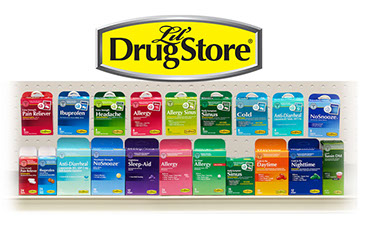 Brought to you by Lil’ Drug Store
Brought to you by Lil’ Drug Store
According to the Technomic C-store Market Brief, the ability to get in and out quickly is the most cited reason as to why consumers purchase an item at a c-store as opposed to other classes of trade. If a retailer can deliver convenience while optimizing other marketing factors, such as product mix and merchandising, they can expect results to follow.
Successful retailers often take a fresh look at the Health and Beauty Care (HBC) assortment and are willing to try new approaches to convenience store merchandising strategy. Lil’ Drug Store Products (LDSP), the #1 HBC supplier to the convenience channel, has worked with retailers of all sizes to develop effective category management strategies. LDSP shared three different strategies that delivered the same end-result – INCREASED SALES and PROFITS, while maintaining efficiencies that c-store shoppers demand.
Strategy 1: Get In Line
In the first case study, LDSP recommended upgrading from a relatively small assortment of HBC products at the front counter to a permanent inline shelf set. This strategy gave consumers a broader selection of HBC solutions, enabled easier shopping access, and increased awareness.
For shoppers coming in for a specific health and beauty item, products were quick and easy to find. The increased visibility and improved access generated incremental sales, as retailers who were not previously thinking to buy HBC products at a convenience store were now more aware of the availability of pain relievers, cold and allergy remedies.
Retailers who have employed this strategy not only increased sales, they also exceeded their budgeted gross profit. In one case, a retailer increased profit by 4.5 times in the first year alone.
Strategy 2: Go Big to Go Home
Ask yourself what you want your HBC shelf design to accomplish and then make it happen by using category management best practices. What are the benefits? Lil’ Drug’s experience shows that a well thought out retail planogram strategy can result in increased visual appeal, more effective communication to customers, tightened inventories, improved product positioning within sub-categories and greater productivity within the space.
As an example, LDSP worked with a Top 50 convenience store chain to create an HBC shelf schematic that moved larger packs of value brand products from the bottom shelf to eye level on the top shelf. This alignment encouraged some shoppers to trade up to the higher dollar value packs, which contributed to more than +10% category dollar growth for the retailer compared to the channel average +2% category growth versus the prior year.
Strategy 3: Up for the Count
In some channels, giving customers a plethora of product forms, pack sizes and formulations to choose from might be good for business. However, space and time is more limited in c-stores so multiple consumer options may not be feasible. Offering too many choices can sometimes be confusing to consumers and makes the HBC category more difficult to shop. Therefore, it is important for the c-store retailer to focus the assortment on the most productive SKUs.
In this third case study, LDSP recommended that a regional c-store chain eliminate middle tier price points. The retailer concentrated on meeting the needs of the price conscious and value oriented shoppers. The absence of a middle price point did not deter shoppers from trading up to higher dollar ring, multi-dose options. In fact, this retailer gained +20% dollar growth after eliminating the middle price point SKU while unit sales remained unchanged compared to the prior year.
Conclusion
Convenience store retailers have limited space so it can sometimes be a challenge to increase sales and profit. Fortunately, several tried and true merchandising strategies simply require a different perspective to generate growth. Consider trying one of the proven techniques described above to increase HBC sales and profit at your stores!
#1 Beauty Brand for Millennials
eos Products Stylish and Effective Daily Use Beauty Products
March 2017
 eos Products makes stylish and effective daily use beauty products. Teen Vogue and Goldman Sachs ranked them the #1 beauty brand in the latest millennial study. eos Products are extremely popular among Hollywood celebrities, who are featured as fans of eos on social media, blogs and celebrity weekly magazines. eos makes lip balms, hand lotions, body lotions and shaving cream.
eos Products makes stylish and effective daily use beauty products. Teen Vogue and Goldman Sachs ranked them the #1 beauty brand in the latest millennial study. eos Products are extremely popular among Hollywood celebrities, who are featured as fans of eos on social media, blogs and celebrity weekly magazines. eos makes lip balms, hand lotions, body lotions and shaving cream.
eos lip balms are delightfully flavored and packed with antioxidant-rich vitamin E, soothing shea butter and jojoba oil. These natural lip balms are hypoallergenic, dermatologist tested, and paraben and petrolatum free for soft, smooth, beautiful lips. Their best-selling flavors are Coconut Milk, Vanilla Mint, Strawberry Sorbet and Sweet Mint.
eos hand lotions combine velvety softness and delightful fragrances to make the perfect lotion. These lotions are packed with nourishing shea butter, aloe, oats and antioxidants to keep your skin beautiful, soft and smooth. eos hand lotions won beauty’s highest honor, Allure magazines “2014 Best of Beauty!” These lotions use 96% natural ingredients and offer 24-hour moisturization. They come in unique impulse-looking, palmable package shapes and in three different fresh scents: Berry Blossom, Cucumber and Fresh Flowers. In addition to hand lotions, are body lotions. These are also made with natural ingredients and a blooming scent that applies richly, feels light, natural and provides visibly softer skin.
eos moisturizing shaving cream is packed with shea butter, nourishing vitamins and green tea and grape seed extracts for 24 hours of skin-softening moisture. Plus, it is enriched with aloe and oat extract allowing a safe shave without worrying about nicks or razor bumps.
These stylish and effective products are perfect for your millennial consumer!
#1 Beauty Brand for Millennials
eos Products Stylish and Effective Daily Use Beauty Products
March 2017
 eos Products makes stylish and effective daily use beauty products. Teen Vogue and Goldman Sachs ranked them the #1 beauty brand in the latest millennial study. eos Products are extremely popular among Hollywood celebrities, who are featured as fans of eos on social media, blogs and celebrity weekly magazines. eos makes lip balms, hand lotions, body lotions and shaving cream.
eos Products makes stylish and effective daily use beauty products. Teen Vogue and Goldman Sachs ranked them the #1 beauty brand in the latest millennial study. eos Products are extremely popular among Hollywood celebrities, who are featured as fans of eos on social media, blogs and celebrity weekly magazines. eos makes lip balms, hand lotions, body lotions and shaving cream.
eos lip balms are delightfully flavored and packed with antioxidant-rich vitamin E, soothing shea butter and jojoba oil. These natural lip balms are hypoallergenic, dermatologist tested, and paraben and petrolatum free for soft, smooth, beautiful lips. Their best-selling flavors are Coconut Milk, Vanilla Mint, Strawberry Sorbet and Sweet Mint.
eos hand lotions combine velvety softness and delightful fragrances to make the perfect lotion. These lotions are packed with nourishing shea butter, aloe, oats and antioxidants to keep your skin beautiful, soft and smooth. eos hand lotions won beauty’s highest honor, Allure magazines “2014 Best of Beauty!” These lotions use 96% natural ingredients and offer 24-hour moisturization. They come in unique impulse-looking, palmable package shapes and in three different fresh scents: Berry Blossom, Cucumber and Fresh Flowers. In addition to hand lotions, are body lotions. These are also made with natural ingredients and a blooming scent that applies richly, feels light, natural and provides visibly softer skin.
eos moisturizing shaving cream is packed with shea butter, nourishing vitamins and green tea and grape seed extracts for 24 hours of skin-softening moisture. Plus, it is enriched with aloe and oat extract allowing a safe shave without worrying about nicks or razor bumps.
These stylish and effective products are perfect for your millennial consumer!
Get BIG HBC Results with Lil’ Drug
Merchandising Tips to Boost HBC Sales
Brought to you by Lil’ Drug Store Products and CSP.
March 2017
 Consumers might not always venture into convenience stores just for health and beauty care items, but that doesn’t mean they don’t need them. As a growing number of consumers – particularly millennials – are visiting c-stores for more than just snacks and beverages, it’s wise not to forget about other important and profitable categories.
Consumers might not always venture into convenience stores just for health and beauty care items, but that doesn’t mean they don’t need them. As a growing number of consumers – particularly millennials – are visiting c-stores for more than just snacks and beverages, it’s wise not to forget about other important and profitable categories.
This is especially true during colder times of year, when consumers need immediate relief for a variety of health issues. Even though many consumers may first think of drug or mass channels for health and beauty care (HBC) needs, c-store retailers can gain a large share of HBC sales by placing seasonally focused displays in stores when category sales are at their peak. The lip treatment category is a great example of an HBC category that experiences seasonal sales that peak from October to January. Lil’ Drug Store Products saw this seasonality as a big opportunity for c-store and collaborated with Carmex to create a limited time “buy one get one free” package that was only available on counter top displays.
Because display space can be tough to find in c-stores, Lil’ Drug and Carmex designed a display that fits efficiently on store counters within a 6-by-7-inch retail footprint. When place on the counter, the Carmex display with the limited time “buy one get one free” promotional offer made it easy for c-store shoppers to pick up a tube of Carmex while they were grabbing a snack or beverage. “It is an opportunity for c-store retailers to deliver convenience to their shoppers when they need it most,” says Doug Marquardt, director of marketing for Cedar Rapids, IA based Lil’ Drug Store Products. “With the right product offer at the right time of year, it was also a great way for convenience stores to pick up incremental sales that might have gone to another channel.”
How much did c-stores gain by placing Carmex promotional displays? Retail sales results showed that c-stores with the promotional Carmex displays had +38% higher lip treatment category sales than retailers without the merchandisers, according to Nielsen Convenience Channel data. Similarly, c-stores that highlighted displays of cough and cold remedies in January and February saw a 27% sales boost over those that did not, according to Nielsen data. Furthermore, merchandising and displays of health and beauty products can be a good opportunity to appeal to customers looking for different packaging sizes.
“We’ve learned that there are shoppers who want single-use packs and there are shoppers who want to stock up,” he says. “Offer both types of products.” Smart merchandising of HBC product does not need to be difficult but it does require advance planning. Retailers should have a good understanding of seasonal category peaks. “Know what time of year the category spikes” Marquardt says. “And be sure to plan ahead so you have displays on the floor before that hits.” Advance planning and understanding of seasonal category spikes, along with targeted merchandising and displays, can help c-stores boost profits in HBC category.
Merchandising Tips to Boost HBC Sales. (2017, January 24). Retrieved March 13, 2017 from www.cspdailynews.com
